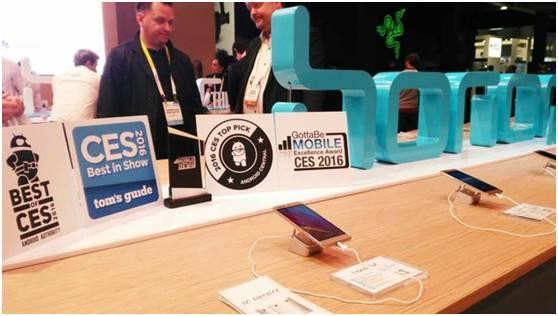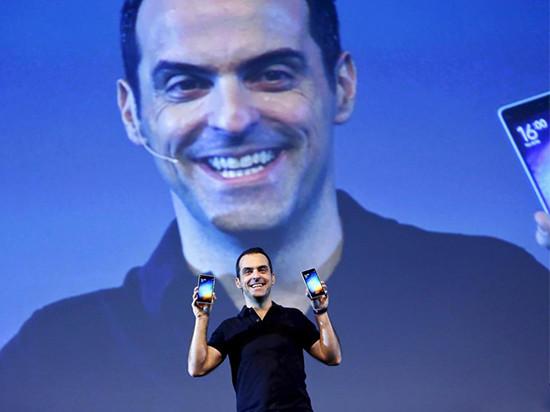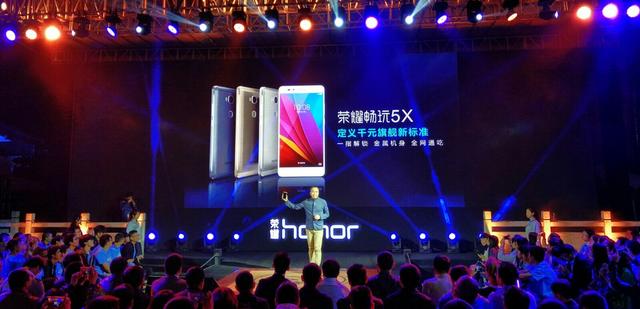Recently, as the shipment of domestic mobile phones became increasingly saturated, Xiaomi and Huawei glory aimed at the US smartphone market. Xiaomi Vice President Hugo Barra revealed that Xiaomi will soon enter the US mobile phone market and sell through young fan communities and online channels. In addition, Huawei officially released the US version of the sub-brand Glory 8 at the San Francisco Museum of Nature, and became the second product to glorify the US market. Why did millet glory enter the United States? The reason why millet glory has entered the United States one after another is clearly related to the gradual saturation of the domestic smart machine market, and the increasing pressure on domestic growth. Especially millet, this year, Xiaomi’s mobile phones gradually showed a trend of decline. In the second quarter of this year, Xiaomi’s shipment volume accounted for 10.4% of the domestic market share, and Huawei’s market share accounted for 14%, followed by This was followed by OPPO (12.7%) and Vivo (11.2%). According to IDC data, Xiaomi’s handset shipments in the second quarter decreased by 38% year-on-year, and Xiaomi’s market share was eroded by opponents such as Huawei and OPPO. The mood for overseas expansion is more urgent than anyone else. Followed by the need to take a high-end strategy. The United States is the center of the current economic and cultural culture. If the recognition of the brand in the domestic market is gradually improved, if you want to take the high-end market to further increase the brand premium, it is obviously not confined to the domestic market. It will inevitably need to be in the United States. This global technology and economic center has won brand recognition before it can be recognized internationally. Once again, the US market environment ushered in good news. We know that because the U.S. operators provide high subsidies, consumers only need to use the carrier's package, and at a lower price, they can purchase iPhone and Samsung flagships at a two-year contract price. However, this status will soon be changed. Not long ago, the four major U.S. operators ended related contract products and eliminated the two-year contract system. The United States phase out the contract system and adopt full-price mobile phone purchases. The smart phone market structure may also undergo some changes, and it also facilitates the domestic mobile phone to enter the US market to gain some price advantage. Huawei millet is prepared for patent but still has risks Of course, entering the US market, as we all know, will inevitably need to get rid of patent barriers, and Xiaomi and Huawei glory have also made some preparations. For example, in June, Xiaomi purchased nearly 1,500 technical patents from Microsoft. The deal was seen in Xiaomi. In order to expand overseas markets, it will reduce the intellectual property disputes it may encounter. Huawei also believes that it is ready. Data shows that Huawei owns 9,800 patents in the United States, of which 7,400 are communications technology patents and 2,200 are digital processing technology patents. But at the same time, the patent problem in the US market still needs Xiaomi glory to make adequate preparations. Earlier mentioned that Xiaomi’s acquisition of Microsoft’s patents could reduce patent disputes, but it does not mean that all roadblocks are excluded. Xiaomi’s patent base is relatively weak. Previously, due to patent issues, some millet models were banned from selling in India. . In the United States, the underlying technologies of mobile phone products all originate from Europe and the United States, including application processor patents, camera module patents, and Baseband baseband patents. In the United States, many patent hooligans rely on patent litigation claims and authorizations to make profits. Xiaomi currently The failure to cover all the lawsuits and the weak links of their patents in the United States patent property rights is easily prey to their patent litigation. Even industry sources pointed out that Xiaomi’s future revenue in the United States may not be able to offset the patent litigation costs that US related manufacturers and patent rogues have initiated. Both ZTE and Huawei have encountered patent litigation in the United States. However, Huawei's development in these years has relatively accumulated in terms of patents, and it has a certain strength to deal with patent litigation, but there are still risks. Another major challenge for Huawei is that the U.S. market is now the biggest obstacle to the expansion of Huawei’s global mobile phone market. In the view of Americans, Huawei has a military background and believes that Huawei’s telecommunications network equipment will threaten its network security, so let the Glory brand Paving first. Huawei's glory to enter the United States does not need to be tested by operators. Huawei's terminals in the United States have the qualification for complete machine testing. Unable to settle the US operator's channel has decided to develop the ceiling Another problem is the sales channel. In the United States, selling mobile phones requires a good relationship with operators. Unlike other regions in the world, about 95% of smart phone sales in the US market are sold through the channels of operators. If operators are uncertain, sales of mobile phones in the US market can basically see where the ceiling is. It is because of the important position of operators in the United States that terminal sales, so a mobile phone in the United States market, the need to pass the United States National Access Certification (FCC), third-party certification, but also operators in the network measured. Coupled with the longer replacement cycle for American consumers, there are very stringent requirements for brands, quality, after-sales, components, production lines, and even environmental protection. The threshold is relatively high. Moreover, in order to ensure quality, brand, and cooperation, operators will not be too low in terms of purchasing equipment, which is extremely unfavorable to domestic manufacturers who have always been the main cost-effective method. Market channels and user positioning are misplaced: China's social network marketing culture is also difficult to eat in the United States. Therefore, the route that Huawei has chosen for its glory in the United States is to avoid operators' online channels and to cooperate with Amazon and other e-commerce channels for sales. Huawei glory of Honor in the United States established the official website, and the glory of the world and that the user can exchange the fans at the forum, can also be purchased on the official website. Since Xiaomi entered the U.S. market for the first time and based on the barriers and barriers to entering U.S. carrier channels, he also chose to follow the online path and social network marketing methods. Xiaomi also said that Xiaomi uses the Internet retail channel sales and social network for marketing in the United States and establishes links with young people who are very enthusiastic about new technologies in the United States. In addition, it can be seen that, from the perspective of the market, users and channels, the glory of Xiaomi brand's entry into the US market does not in fact meet the needs of mainstream users in the US market. First of all, the US mobile phone market is dominated by mid-to-high-end markets, but Xiaomi Glory has targeted the low-end segment. The U.S. market is dominated by operators. U.S. smart phone sales operators account for 95% of all U.S.-based smart phone sales. While millet Glory is mainly online, even U.S. users are more accustomed to using U.S. carriers. The online shop purchases a mobile phone because it can be determined that the mobile phone is compatible with the operator's network without having to deal with various troubles such as whether the SIM card matches. Therefore, if Xiaomi Huawei sells mobile phones only through its own network platform, this is inconsistent with consumer habits. Therefore, to some extent, Xiaomi glory enters the US market, but there is a mismatch between market channels and user positioning. Millet Huawei glory in the United States to choose online sales model and social network marketing in the United States market is also the cart before the horse, it is difficult to obtain large-scale development. The price/performance ratio is not applicable The US consumer's pursuit of mobile phones is different from that of China. On the other hand, according to data research company comScore research results show that Apple and Samsung are still the dual players in the US market, Apple's iPhone market share in the United States is as high as 43.5%, and continues to rise, while Samsung’s market share continues to stabilize at 28%. Together they account for nearly 70% of the market. From the current position of Xiaomi's glory, obviously not to compete for high-end market, but to compete for low-end market share, which obviously can only rely on cost-effective. In China, domestic mobile phones benefit from high import tariffs, which increases the price of foreign mobile phones, making domestic mobile phones more cost-effective. However, in the United States, the situation may be reversed. China's smart phones will be compared with Apple's Samsung, and the price/performance advantage may not be so obvious. In addition, the price/performance ratio cannot be a selling point in the United States. U.S. consumers are pursuing more cool technology products. However, Huawei's millet currently supports new mobile phones compatible with Google's Daydream VR platform. This may be a bright spot to impress US consumers, but it is still not optimistic about the user experience and level of innovation of products that support VR phones for the first time. The localization of software ecology and the integration of mobile phone products with American Internet culture are difficult problems Once again, it is the software ecosystem. Xiao Mi’s story in China is that MIUI is more in line with Chinese habits than native Android. However, in the US market, this story no longer applies. Due to the different market environment, the localization of software applications is difficult for domestic manufacturers in the United States. Specific optimization for their MIUI is not suitable for Americans' habits. The US Android mobile phones are all The main use of native systems, MIUI this kind of localized custom ROM to optimize the experience of the use of the statement in the United States is untenable, based on Android UI and ROM optimization is difficult to be recognized by most users. In addition, smart phones sold in the US market will basically cooperate with local Internet companies such as Facebook, Google, and WhatsApp, and how domestic mobile phones in the United States are currently compatible with local Internet applications such as facebook, WhatsApp and Google, and are deeply integrated with UI. It is not easy at the level of hardware, software, culture, and cooperation. So to a certain extent, Xiaomi's glory marching into the US market is more of an assumption of the US market situation as China, and everything is operating in accordance with the Chinese approach, but in reality it does not seriously scrutinize the actual situation in the US market. We must know that To enter the US market, domestic mobile phone manufacturers can not just copy the domestic model, but need to analyze the industry situation and cultural background of the US market, find their own best market positioning and strategy, in addition, Chinese companies like to fight price war while often ignoring product quality and after-sales issues, but in a relatively mature US market, these defects is fatal for the brand. Although there are certain opportunities for domestic mobile phones to enter the US market, relatively speaking, the risk still exists. Therefore, the first thing Xiaomi Huawei needs to think about is to survive and seek development. The glory of Xiaomi’s entry into the United States is now more of a kind. attitude, need to encounter difficulties and setbacks may be yet to come, of course, setbacks and difficulties, for the domestic mobile phone, but also a necessary growth. This article from the Tencent News client from the media, does not represent the views and positions of Tencent News Temperature Sensor,Ambient Temperature Sensor,Air Temperature Sensor,Fuel Temperature Sensor Xiaogan Yueneng Electronic Technology Co., Ltd. , https://www.xgsensor.com


